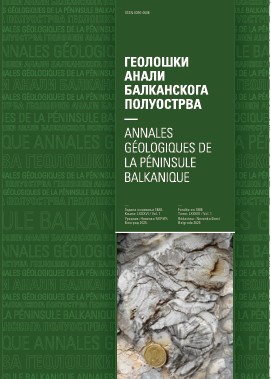Neoproterozoic–Paleozoic evolution of the Drina Formation (Drina–Ivanjica Entity)
Abstract
This paper addresses a Drina-Ivanjica basement member, Drina Formation, characterized by controversial Neoproterozoic to Carboniferous age. The Drina Formation is also informally referred to as the “Lower Drina Formation” and the “Upper Drina Formation” including the Golija Formation as a conditional analog unit of the latter. A review of the biostratigraphic, sedimentary and paleogeographic constraints identified Drina Formation (Inner Dinarides) as a migrated crustal segment derived from a marginal section of northern Gondwana, being, however, of Neoproterozoic–Early Paleozoic age. The presence of arenites, pelites, conglomerates, scarce limestones, basic (sub)volcanics and tuffs of the volcano-sedimentary Drina Formation metamorphosed up to greenschist and locally up to amphibolite facies, coupled with the absence of felsic volcanism implies a passive margin setting. Considering the age, such environment was probably associated with the perplexed Lower Paleozoic Avalonian-Cadomian arc, situated along the former north Gondwanan active margin. More precisely, the Drina Formation originated from a depositional junction between the Gondwana sediment supplier (Sahara metacraton) and Cadomian arc. Acomparison with the regional Early Paleozoic succession of the “Kučaj Unit” (eastern Serbia) yields the absence of typical anchimetamorphic Silurian to Lower Devonian deep-marine fossil-bearing succession. The volcano-sedimentary passive margin system of Drina Formation is overlain by a late Variscan convergence related voluminous clastic sequence allocated as the Golija Formation.
Copyright (c) 2018 Geološki anali Balkanskoga poluostrva

This work is licensed under a Creative Commons Attribution 4.0 International License.










